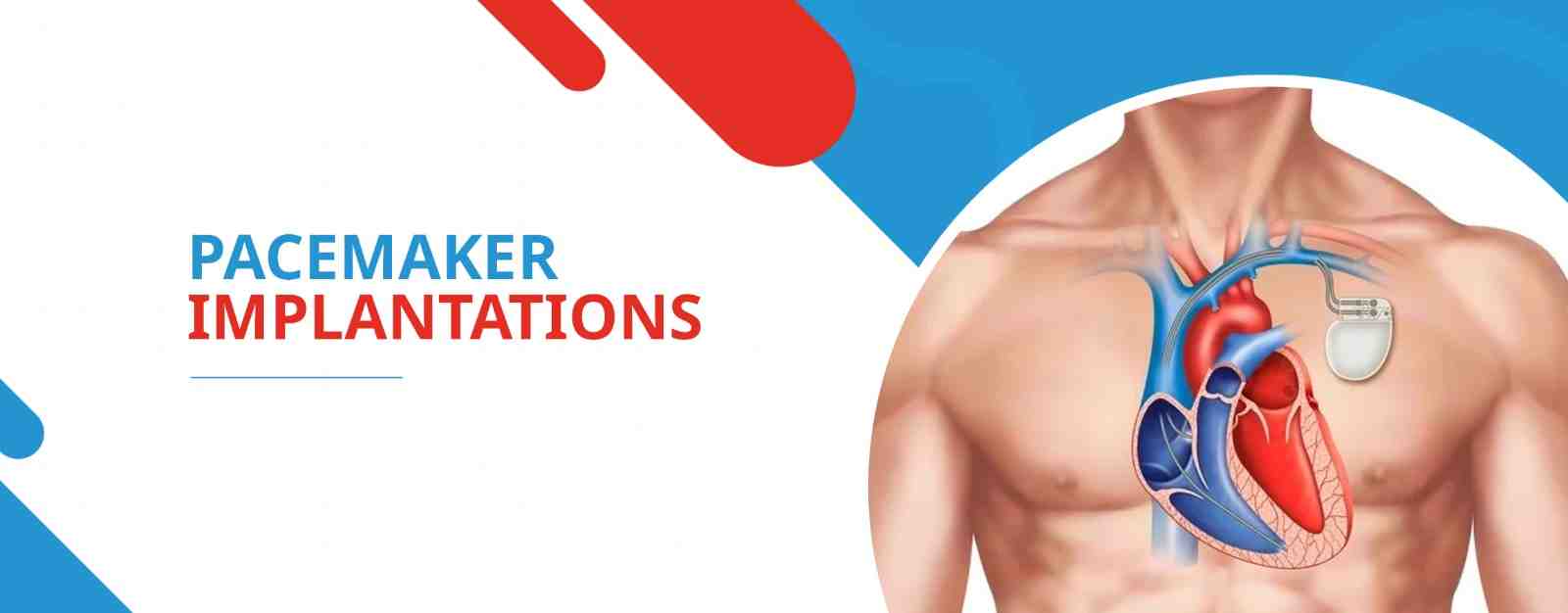
Pacemaker implantation
What is a Pacemaker?
A pacemaker is a small, battery-operated device that helps regulate the heart’s electrical activity and ensures it beats at a normal rhythm. It consists of two main components: a pulse generator and leads (wires). The pulse generator contains a battery and electronic circuitry, while the leads are placed inside the heart to deliver electrical signals and monitor the heart’s activity.
Who Needs a Pacemaker?
Pacemakers are primarily recommended for individuals with heart rhythm disorders, such as bradycardia (slow heart rate), heart block, or certain types of arrhythmias. These conditions can cause symptoms like fatigue, dizziness, shortness of breath, and fainting spells. Pacemakers help regulate the heart rate and improve overall heart function, allowing individuals to lead a more active and fulfilling life.
Pacemaker Implantation Procedure -
The pacemaker implantation procedure is a minimally invasive surgery performed by a qualified cardiologist or electrophysiologist. The procedure generally involves the following steps:
- Anesthesia: The patient is usually given local anesthesia to numb the area where the pacemaker will be implanted. In some cases, general anesthesia may be used.
- Incision: The doctor makes a small incision, typically on the upper chest, and creates a pocket to hold the pulse generator.
- Lead Placement: The leads are carefully threaded through a vein and guided into the heart. The leads are then attached to the appropriate areas of the heart muscle.
- Testing and Programming: Once the leads are securely in place, the doctor tests the pacemaker’s functionality and programs it according to the patient’s specific needs.
- Closing the Incision: The incision is closed with sutures or surgical staples, and a sterile dressing is applied.
Recovery and Follow-Up Care
After the pacemaker implantation, patients usually spend a short time in a recovery area to ensure stability. Most individuals can return home the same day or within a day or two. The recovery period may involve avoiding strenuous activities for a few weeks and taking prescribed medications as directed.
Regular follow-up appointments with the cardiologist are essential to monitor the pacemaker’s function, adjust settings if needed, and ensure optimal heart health. *Pacemakers require periodic battery replacements, usually every 10 to 15 years, depending on usage*.

Like any medical procedure, pacemaker implantation carries certain risks, such as infection, bleeding, damage to blood vessels or nerves, or allergic reactions to anesthesia or device materials. However, serious complications are rare, and the benefits often outweigh the risks.
